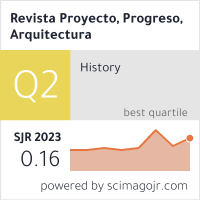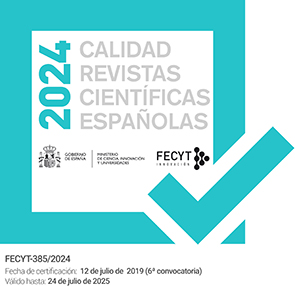ASPLUND, PEREGRINACIONES Y AÑOS DE PREGUNTAS / Asplund, the years of wandering and wondering
DOI:
https://doi.org/10.12795/ppa.2010.i3.04Palabras clave:
Escandinavia, Romanticismo Nacional, Asplund, Viajes, Scandinavia, National Romanticism, JourneysResumen
RESUMEN El movimiento Romántico Nacional se distinguió en Suecia de la misma corriente en otros países y del mero nacionalismo, al promulgar una visión del mundo progresista apostando por el cambio, en lugar de una visión inmovilista pastoral-agraria que lo caracterizaba como conservador en otros lugares. En su enfrentamiento con la industrialización y los nuevos estándares de vida a caballo entre los siglos XIX-XX, cristalizaron los movimientos liberales de enseñanza que posibilitaron las rupturas con la enseñanza académica imperante, hecho aprovechado por las vanguardias para erigirse como nuevo paradigma. En la situación de aislamiento de los países escandinavos, figuras como las de Asplund, Bergh o von Heidenstam aprovecharán la situación para sentar las bases de una conciencia nacional basada en las tradiciones, que articule la identidad de su pueblo ¿En qué medida sus estancias en el extranjero convirtieron este sentimiento de nostalgia en una necesidad vital? La obra de Asplund en relación a sus viajes ejemplifica el sentido que para un sueco supone estar lejos de su tierra así como la necesidad de reconciliación con sus orígenes que experimenta en su regreso al hogar, así como la aceptación parcial que el espíritu racionalista tuvo en la Suecia de la época. En el acomodo de influencias externas adquiridas en un lenguaje verdaderamente nacional se encuentran parte de las explicaciones a los enigmas que el trabajo de Asplund dejó suspendidos en el tiempo.
SUMMARY The National Romantic movement in Sweden was distinguished from the same trend in other countries and from mere nationalism, by promulgating a vision of the progressive world and committing to change, instead of the ultra-conservative, pastoral-agrarian vision characterized in other places. Its confrontation with industrialization and the new standards of life between the XIXth and XXth centuries, crystallized the liberal educational movements which enabled the ruptures with the prevailing academic line, a fact taken advantage of by the avant-garde to form a new paradigm. In the isolated situation of the Scandinavian countries, figures such as Asplund, Bergh or von Heidenstam, would take advantage of the situation to lay the foundations of a national conscience, based on traditions which articulated the identity of their people. To what extent did their stays abroad turn this feeling of nostalgia into a vital necessity? The work of Asplund, in relation to his journeys, exemplifies the sense that a Swede might have when far from his homeland, as well as the need experienced on his return home for reconciliation with his origins, and the partial acceptance of the rationalist spirit in the Sweden of that time. The explanations to the enigmas that the work of Asplund has left suspended in time lie partly in the adaption of acquired external influences in a truly national language.
Descargas
Citas
AA. VV.: Asplund, 1885-1940. Arsbok. Estocolmo: Arkitekturmuseet, 1986.
Alhberg, Hakon: Gunnar Asplund, Arquitecto. 1885-1940. Madrid: COAAT, 1982 (o. 1943).
Asplund, Erik Gunnar, et al.: Acceptera. Estocolmo: Tiden, 1931.
Bergh, Richard: “Konst academier”. En Efter Lämnade skrifter om konst och annat. Estocolmo: Bonnier, 1921.
Blundell-Jones, Peter: Asplund. NY: Phaidon, 2006.
Caldenby, Claes; Hultin, Olof (Eds.): Asplund. Barcelona: GG, 1988 (o. 1983).
Caldenby, Claes; Lindvall, Joran; Wang, Wilfried (Eds.): Sweden. 20th-century architecture. NY: Prestel, 1998.
Cornell, Elias: “El Cielo como una Bóveda”. En Alhberg, H.: Gunnar Asplund, Arquitecto. 1885-1940. Ed. cit. (o. 1961).
Donnelly, Marian C.: Architecture in the scandinavian countries. Boston: Massachusetts Inst. of Technology, 1992.
Engfors, Christina: E.G.Asplund: Architect, friend and colleague. Estocolmo: Arkitektur Förlag, 1990.
Lane MIiller, Barbara: National romanticism and modern architecture in Germany and scandinavian countries. Cambridge: Cambridge Un. Press, 2000.
Larsson, Carl: Ett hem. Estocolmo: Bonnier, 1899.
López Peláez, José Manuel: La Arquitectura de Gunnar Asplund. Barcelona: Fundación Caja de Arquitectos, 2002.
López Peláez, José Manuel y Luis Moreno MANSILLA (Eds.): Escritos 1906-1940. Cuaderno de Viaje a Italia de 1913. El Escorial: El Croquis, 2002.
Lyn, Francis E.: “Mediterranean resonances in the work of Erik Gunnar Asplund”. En Lejeune, Jean Françoise; Sabatino, Michelangelo (Eds.): Modern architecture and the vernacular dialogues and contested identities. NY: Routledge, 2010.
Facos, Michelle: Nationalism and the nordic imagination. Swedish art of the 1980s. Londres: Un. California Press, 1998.
Josephson, Ragnar.: Nationalism och Humanism, Estocolmo: Bonnier, 1935.
Kent, Neil: The soul of the north. A social, architectural and cultural history of the Nordic Countries. Londres: Reaktion Books, 2001 (o.2000).
Mattson, Helena; Wallenstein, Sven O.: 1930-1931. Den svenska modernism vid vägskälet. Estocolmo: AXL, 2009.
Paulsson, Gregor: Upplevt. Estocolmo: Experiences, 1974.
Rudberg, Eva: The Stockholm Exhibition 1939. Modernism’s breakthrough in swedish architecture. Estocolmo: Stockholmia Förlag, 1999.
Varnedoe, Kirk (Ed.): Northern light. Realism and symbolism in scandinavian painting. NY: Brooklyn Museum, 1983.
Wrede, Stuart: La arquitectura de Erik Gunnar Asplund. Barcelona: Júcar Universidad, 1992 (o.1980).
Zevi, Bruno: Erik Gunnar Asplund. Buenos Aires: Infinito, 1957.
Descargas
Publicado
Cómo citar
Número
Sección
Licencia
Las ediciones impresa y electrónica de esta Revista son editadas por el Secretariado de Publicaciones de la Universidad de Sevilla, siendo necesario citar la procedencia en cualquier reproducción parcial o total.
Salvo indicación contraria, todos los contenidos de la edición electrónica se distribuyen bajo una licencia de uso y distribución “Creative Commons Atribución-NoComercial-SinDerivar 4.0 Internacional” ![]() . Puede consultar desde aquí la versión informativa y el texto legal de la licencia. Esta circunstancia ha de hacerse constar expresamente de esta forma cuando sea necesario.
. Puede consultar desde aquí la versión informativa y el texto legal de la licencia. Esta circunstancia ha de hacerse constar expresamente de esta forma cuando sea necesario.
Los autores/as que publiquen en esta revista aceptan las siguientes condiciones:
- Los autores/as conservan los derechos de autor y ceden a la revista el derecho de la primera publicación, con el trabajo registrado con la licencia de atribución de Creative Commons, que permite a terceros utilizar lo publicado siempre que mencionen la autoría del trabajo y a la primera publicación en esta revista.
- Los autores/as pueden realizar otros acuerdos contractuales independientes y adicionales para la distribución no exclusiva de la versión del artículo publicado en esta revista (p. ej., incluirlo en un repositorio institucional o publicarlo en un libro) siempre que indiquen claramente que el trabajo se publicó por primera vez en esta revista.
- Se permite y recomienda a los autores/as a publicar su trabajo en Internet (por ejemplo en páginas institucionales o personales) antes y durante el proceso de revisión y publicación, ya que puede conducir a intercambios productivos y a una mayor y más rápida difusión del trabajo publicado (vea The Effect of Open Access).









